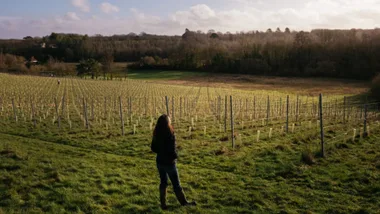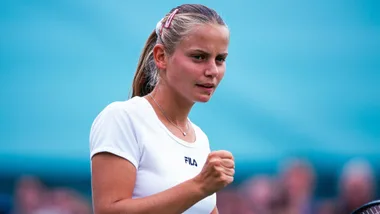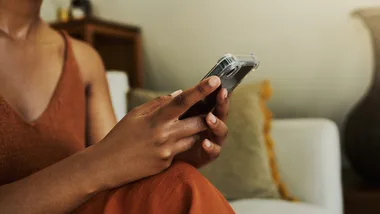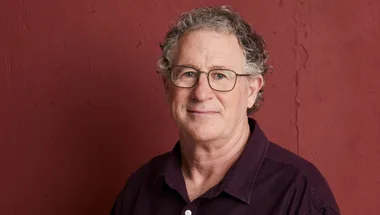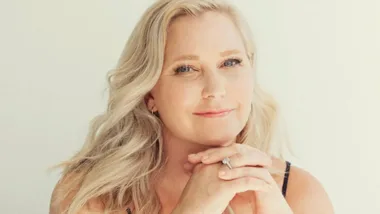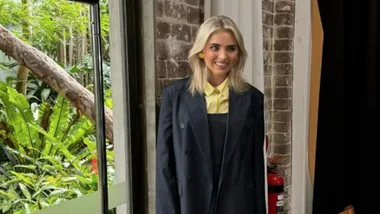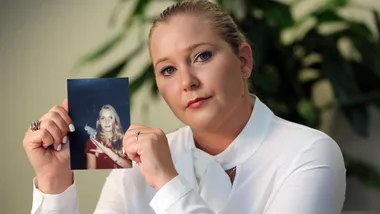On the morning of February 12 last year, single mother Rosie Batty was working at the small business she ran from her home in the Melbourne suburb of Tyaab. That afternoon she took her 11-year-old son Luke to cricket practice, the duo only having recently returned from a five-week holiday to the UK. But by the time night fell that day, the then 52 year old had become an unwilling and tragic symbol of the violence that lies beneath the surface of our community, after her former partner, Greg Anderson, murdered their son on a sports oval.
That tragic day, Rosie Batty joined an ever-growing list of women whose names we wish we didn’t know. We shouldn’t know. Women like Lisa Harnum, Leila Alavi and Allison Baden-Clay, who are only three of the more than 200 women who have been killed by their partners since 2011.
Fast-forward to 2015, and Rosie Batty is Australian of the Year, the reluctant figurehead of the campaign against domestic violence in this country. She manages a rare feat: she has endured a great tragedy without turning into a tragic figure. But when this strong, forthright and intelligent woman appeared on the ABC’s Q&A program in February, as part of a panel devoted
to the long-overlooked issue of family violence, she made one of the saddest observations in the entire program.
“You can’t always trust the response [you get] from the people that you turn to [to] help you… And that has to change.”
Rosie Batty
You could almost hear the silent affirmation of the show’s audience, both in the studio and around the nation. But just who is going to lead that change? As the absence of Tony Abbott, the Minister for Women, on Q&A that night showed, politicians are not our white knights. The political near-invisibility of the domestic violence issue, and policy responses to it, should, of course, be
a source of national shame.
Imagine if one Australian a week was killed by dog attack. Or if one child a week was killed by a shark. Such would be the outcry that our governmental machinery would no doubt immediately swing into action with alarming effectiveness, spawning reams of preventative legislation and lobbing copious amounts of funding at the issue. If the government was sending our diggers to an international conflict that was claiming lives at this same alarming rate, there would be a near-insurrection in the streets.
And yet, that is precisely the rate at which Australian women are being killed by our domestic violence epidemic. The problem has snowballed before our eyes – during 2013 to 2014 in NSW, domestic violence-related assaults showed significant upward trends, while almost every other category of crime was decreasing.
“It’s a national emergency that is costing lives of women and children.”
Anne Summers, leading Australian feminist and author
But, when compared to other line items in the federal budget, the government funding response to the domestic violence crisis seems to be on something of a less-than-emergency footing.
In June 2014, Prime Minister Tony Abbott announced extra funding of $100 million over four years for the National Plan to Reduce Violence against Women and their Children, bringing the total spending for the campaign to $200 million over eight years. Sounds like a lot, right? Sure it does, until you play a little game of compare and contrast.
In August last year the government announced an extra $630 million for homegrown counter-terrorism measures. Meanwhile, the state and federal governments are expected to fork out $325 million for the 100th anniversary of Anzac Day commemorations.
Heck, in 2013 Tasmania’s Cadbury chocolate factory was promised $16 million by the government. Just to make chocolate. Which it would presumably have done anyway. Cadbury has since withdrawn its application for the grant.
This funding disconnect is even more astounding when you consider that domestic violence costs the Australian economy a staggering $13.6 billion a year¥ (in lost productivity, medical bills and other expenses).
So while we all agree it is time for governments to fork out serious cash, is it time we just got on with things ourselves? After all, great social change has often been built by diligent women, from the ground up. In Australia, the 1974 establishment of Elsie, Australia’s first women’s refuge, was one example where our impatience for change proved an unstoppable force. A group of women, including then post-graduate student Anne Summers and her colleague, Diana Beaton, decided to establish a safe place for women fleeing domestic violence.
They didn’t tentatively write to the council or start a petition or spend hours making posters to drum up public support. Instead, armed with shovels and brooms, they seized an abandoned cottage in Sydney, changed the locks and got word out to women in distress that they now had a safe place to turn to.
Their bold action inspired community help. Electrical goods retailer Joyce Mayne delivered refrigerators and washing machines. Local shops donated food and Rotary helped secure the fences. Summers actually dealt marijuana for a year to fund the refuge before some government funding was secured.
It is in that same spirit of unapologetically bolshy pragmatism that Australian women have started to do what the each other. Galvanised into action by leaders such as Batty and other crusaders like Joan Harnum, the mother of murdered domestic violence victim Lisa Harnum, ordinary Australian women have started their own revolution.
There is The Nappy Collective of Melbourne, which began when mother Sandra Jacobs put out a call on Facebook to collect leftover nappies to donate to a women’s crisis centre. She was deluged with more than 1500 nappies, offered by other ordinary mums. The collective has now spread to other states, with 140 nappy collection points nationwide. On the Gold Coast, there is Assist A Sista, a group of community volunteers who use Facebook to corral clothing, furniture, toys and food to makeover new homes for domestic violence survivors.
In Sydney, there is the Lisa Harnum Foundation, established in 2014 by former nurse and community chaplain Aileen Mountifield. Another community venture with no taxpayer funding, the foundation is fundraising to establish a support centre for battered women in the Hills District of Sydney.
Annabelle Daniel, CEO of the NSW-based Women’s Community Shelters, didn’t wait for the government to fill a shortfall in temporary crisis accommodation. She led a crusade herself and built the recently opened Hornsby Kuringgai Women’s Shelter. Along the way she helped raise a $22,000 donation with a comedy night at the local RSL.
These green shoots of community activity have a two-fold effect. Firstly, they shame (or inspire) government into helping out – it is much easier for a popularity-chasing politician to jump on the bandwagon of an up-and-running community initiative, than it is for him or her to start one from scratch.
Secondly, community initiatives inspire us all to get involved. After all, if one woman can muster an army of thousands of nappy-donors from a single Facebook post, imagine what tsunami of change is possible if we all take up arms for the cause.
At its heart is the power of women helping other women in need. Moo Baulch, CEO of Domestic Violence NSW, says women are excellent at being first responders to others in crisis.
“I think the most practical thing a woman can do is be a good bystander,” she comments.
“For some women, it will take them 18 or 19 tries to leave. Knowing there is someone there who will believe them, listen to them or offer them a couch to sleep on can make all the difference.”


